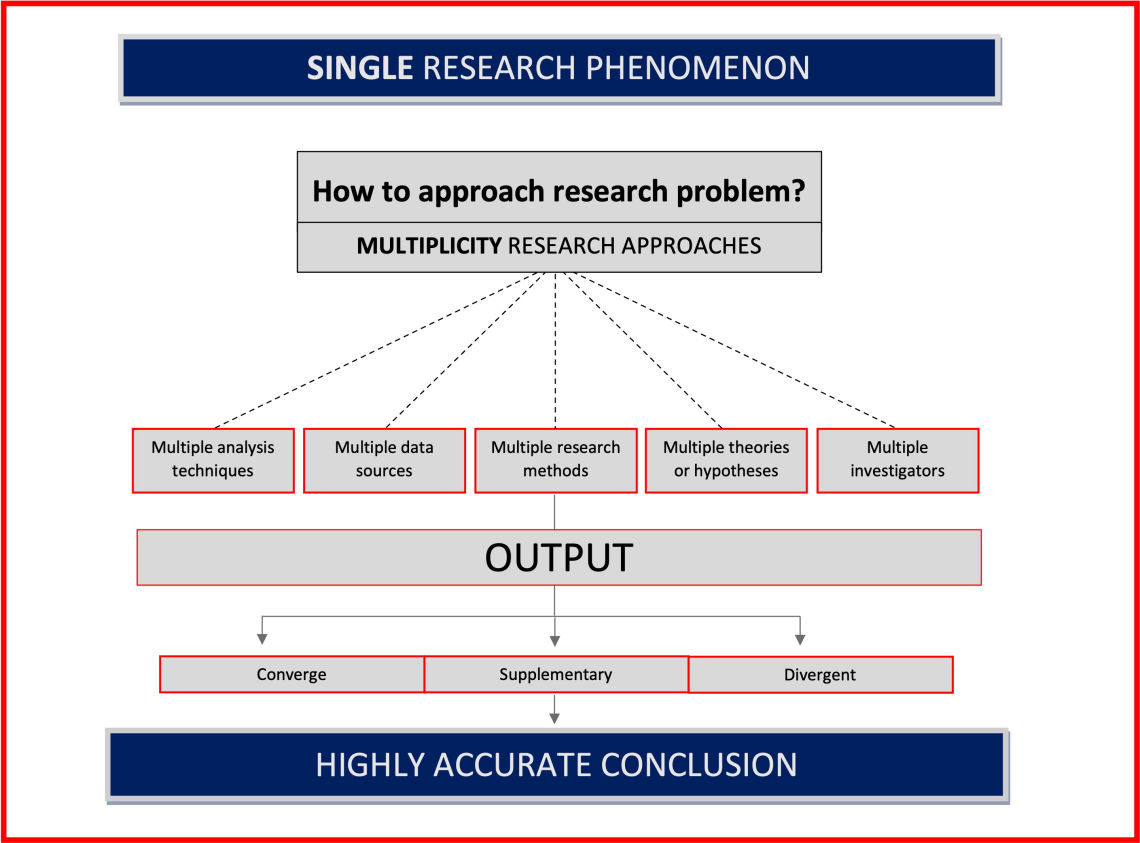Triangulation for a better accuracy - Part 1
Reaching high confidence of research results through mixed methods

Article series
Triangulation
- Triangulation for a better accuracy - Part 1
- Triangulation for a better accuracy - Part 2
Marketing research projects encounter different types of errors. The challenging task for the researcher is to think deeply about how to reduce errors. The most effective strategy here is to focus on reducing the total errors rather than being concentrated on a single error type as this will enhance the overall accuracy of the research findings by controlling the impact of all errors; therefore, the aggregated error of the study can be decreased. Applying such a strategy is not always easy; it needs a comprehensive and complex approach. Fortunately, triangulation could be one of your toolkits to reduce the total error and generate an accurate insight and conclusion. What is triangulation then? Well, originally this term was used in the navigation field to determine locations, but later it became widely used in the research domain.
Imagine analysing data sets from different sources to integrate them to explain and understand the reason behind sales decline which is considered a kind of triangulation. Triangulation is defined as the process of combining and integrating multiple approaches to increase the confidence of the generated research findings. How does it work?
Triangulation mechanism
The core of the triangulation is all about multiplicity; while having a single research phenomenon; multiple approaches are employed to study it. The below figure illustrates this mechanism. While we conduct a study to understand a unique phenomenon it can be studied using multiple approaches e.g. quantitative and quantitative research or in another case utilising more than one data source to reach the conclusion. The process involves counterbalancing by taking the strong points of each approach while, at the same time, overcoming the weakness as the employed approaches complete each other so less risk, error and high accuracy can be maintained. For example, it is quite known that qualitative research cannot quantify research results (which quantitative research does), but it provides answers to why questions (which quantitative research does not). Triangulation allows both research tools to be employed and benefit from the strengths and overcome the weakness of each method.
Triangulation uses multiple approaches; does it mean the outcome is always different? If it is a different outcome, is there a way to deal with such a situation? The short answer for the first question is “No”, and for the second one is “Yes”. Let us elaborate more. There are 3 expected outputs of triangulation which are converge, supplementary and divergent
Converge: the outcome of the different approaches is leading to the same conclusion. Here you would be quite confident about the research findings as the same conclusion has been confirmed through different approaches.
Supplementary: the results of the employed approaches are not the same, but they explain and complete each other. In this case, you have a chance to complete the missing part of the story and fill in the blanks, so the conclusion is comprehensive.
Divergent: the results of the different approaches contradict each other. In this case, divergence treatment (briefly, accuracy assessment for the adopted approaches) is required to decide the accuracy level and the correct conclusion.

Triangulation benefits
I believe Dr Norman Denzin summarises the benefits of triangulation in his saying: “The greater the triangulation, the greater the confidence in the observed findings”. Broadly, triangulation is an effective tool for improving the research findings through:
Decreasing biases – strengths of one method compensate for the weaknesses of another.
Providing a deep understanding of the phenomena under the research.
Reducing false interpretations.
Increasing the confidence of the generated insights.
Explaining complex human behaviours using a variety of methods
That’s all for this part, the next part of this article will explain different types of triangulations and a case study. Stay tuned!
Ahmed is a marketing research analyst focusing primarily on quantitative research. Throughout more than 18 years of experience, he held different roles at research agencies and corporate research departments. His experience extends to several countries, business sectors and research types. While working on the client side, he got an opportunity to be part of the customer experience department to support its mission of offering a memorable experience. He holds Insights Professional Certification (IPC) from the Insights Association, BA in business administration, a diploma in applied statistics in the opinion research major, and advanced analytic techniques badge from University of Georgia. In addition to his practical experience, he designs and delivers training in marketing research topics. Furthermore, he shares his thoughts and professional practices through articles. He is also the winner of the 2023 Insight250 award.
Article series
Triangulation
- Triangulation for a better accuracy - Part 1
- Triangulation for a better accuracy - Part 2

